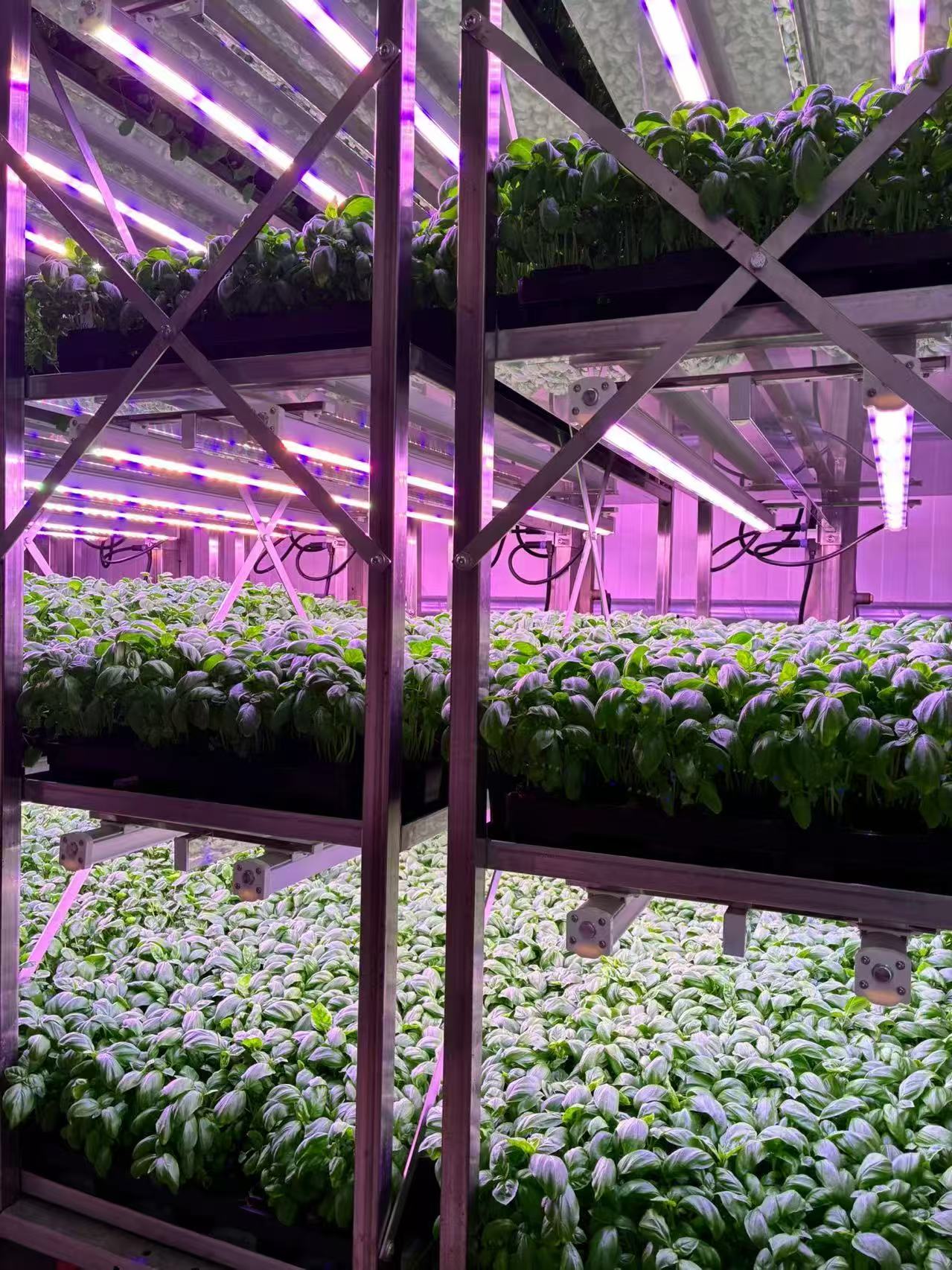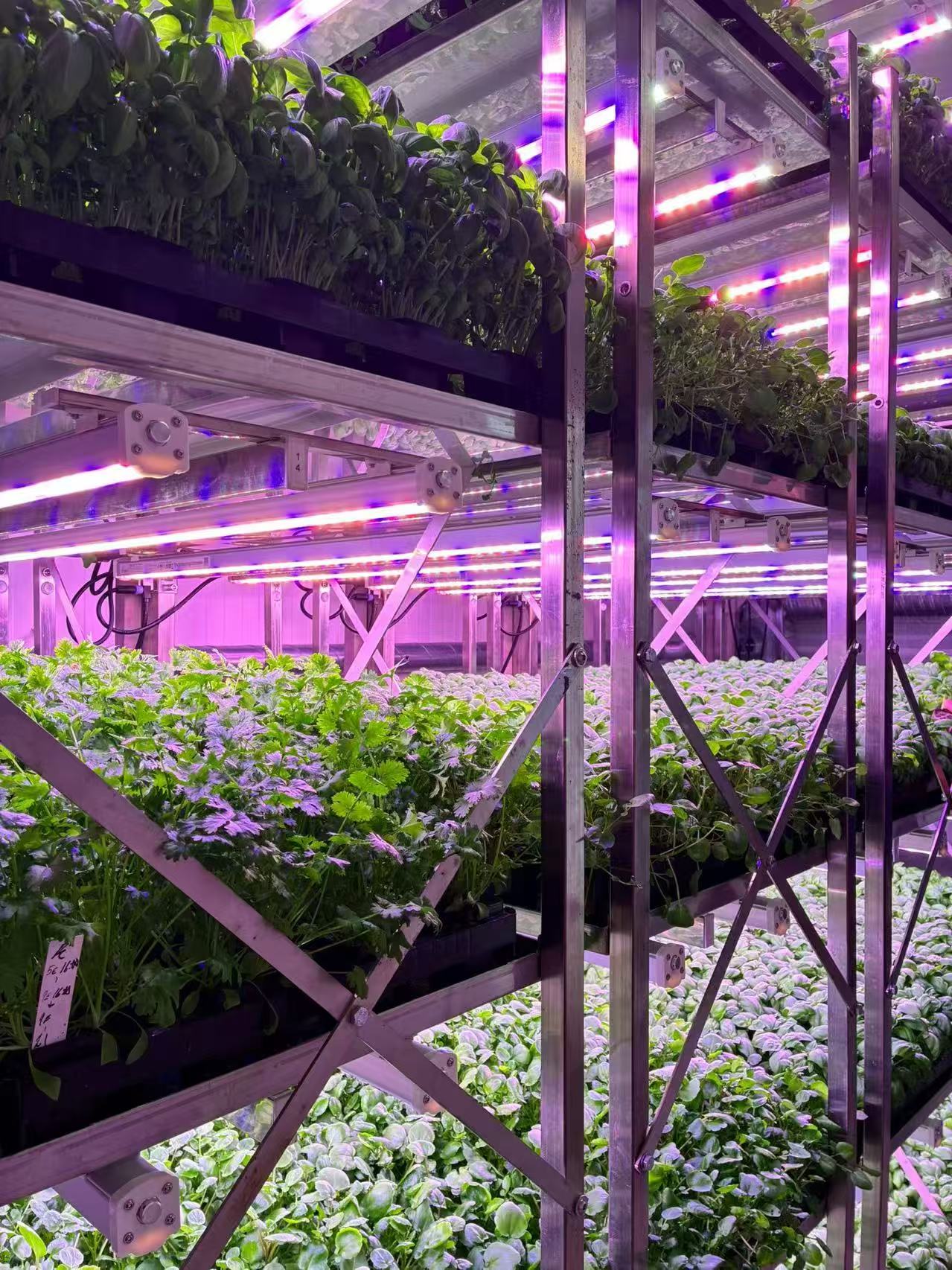Sweeden Vertical Farming
Vertical farming is a rapidly growing agricultural technology that aims to maximize crop yield while minimizing land use and resource consumption. In Sweden, where traditional farming faces challenges due to harsh climates and limited arable land, vertical farming has emerged as a promising solution. At the heart of this innovative approach lies the critical role of plant lights, which enable year-round cultivation in controlled indoor environments.
This article explores how plant lights are applied in Swedish vertical farming, highlighting their benefits, technological advancements, and impact on sustainable agriculture.
The Role of Plant Lights in Vertical Farming
In vertical farming, plants are grown in stacked layers within enclosed spaces, often without soil (hydroponics or aeroponics). Since natural sunlight is unavailable indoors, artificial lighting becomes the primary light source for photosynthesis. Plant lights are specifically designed to provide the optimal wavelengths and intensity required for plant growth, ensuring efficient energy use and high yields.


Key Features of Plant Lights in Vertical Farming
Full-Spectrum LEDs : Modern plant lights use LED technology to deliver a full spectrum of light, mimicking natural sunlight. This includes blue light (400–500 nm), which promotes vegetative growth, and red light (600–700 nm), which stimulates flowering and fruit production. Some advanced systems also incorporate far-red light (700–800 nm) to enhance overall plant health.
Energy Efficiency : LEDs consume significantly less energy compared to traditional high-pressure sodium (HPS) or metal halide lamps. They also have a longer lifespan, reducing maintenance costs and environmental impact.
Customizable Light Recipes : Plant lights can be programmed to deliver specific light spectra at different stages of plant growth. For example:
- Vegetative Stage : Higher blue light content to promote leaf development and strong root systems.
- Flowering Stage : Increased red and far-red light to stimulate bud formation and resin production.
Uniform Light Distribution : In multi-tiered vertical farms, plant lights are strategically placed above each layer to ensure uniform illumination across all plants. Adjustable height mechanisms allow the lights to move closer or farther from the plants as they grow.
Smart Controls and Automation : Many modern plant light systems come with smart controls that integrate with IoT platforms. These systems can automatically adjust light intensity, duration, and spectrum based on real-time data from sensors monitoring factors like plant health, humidity, and temperature.
Applications of Plant Lights in Swedish Vertical Farming
Sweden's climate presents unique challenges for traditional agriculture, with long, dark winters and short growing seasons. Vertical farming, powered by plant lights, offers a solution by enabling year-round cultivation in controlled indoor environments. Here’s how plant lights are applied:
1. Optimizing Growth Cycles
- Year-Round Cultivation : Plant lights allow farmers to simulate ideal growing conditions regardless of the season. By providing consistent light, temperature, and humidity, vertical farms can produce crops continuously.
- Reduced Growing Time : With optimized light recipes, plants can reach maturity faster. For example, leafy greens typically take 2–3 weeks to mature in vertical farms, compared to 4–6 weeks outdoors.
2. Enhancing Crop Quality
- Tailored Spectra for Specific Crops : Different crops have varying light requirements. Plant lights can be fine-tuned to deliver the optimal spectrum for each type of plant. For instance, leafy greens thrive under higher blue light, while tomatoes benefit from more red light.
- Improved Nutrient Absorption : Proper lighting enhances photosynthesis, leading to better nutrient uptake and healthier plants. This results in higher-quality produce with enhanced flavor and nutritional value.
3. Space Optimization
- Vertical Stacking : Swedish vertical farms often utilize multi-tiered systems to maximize space efficiency. Plant lights are mounted above each layer, ensuring that plants on every level receive adequate illumination.
- Compact Footprint : Indoor vertical farms require significantly less land than traditional outdoor farms. This is particularly advantageous in Sweden, where arable land is scarce.
4. Sustainability and Energy Efficiency
- Reduced Water Usage : Vertical farms using hydroponics or aeroponics consume up to 95% less water than conventional farming. Combined with energy-efficient LED plant lights, this creates a highly sustainable system.
- Lower Carbon Footprint : By eliminating the need for transportation of fresh produce over long distances, vertical farms reduce carbon emissions. Additionally, the energy-efficient nature of LED lights further minimizes the environmental impact.
Case Studies in Swedish Vertical Farming
Several Swedish companies and organizations have successfully implemented vertical farming technologies, leveraging plant lights to achieve remarkable results:
1. Farmers of Tomorrow (Stockholm)
- Application : Farmers of Tomorrow uses vertical farming to grow leafy greens, herbs, and microgreens in an urban setting.
- Lighting Solution : The farm employs custom-designed LED plant lights that deliver a balanced spectrum of blue, red, and white light. These lights are mounted on adjustable racks to accommodate different plant heights.
- Outcome : The farm has achieved a 90% reduction in water usage compared to traditional farming and produces fresh greens year-round, even during Sweden’s harsh winters.
2. Cultivator AB (Lund)
- Application : Cultivator AB focuses on cultivating high-value crops such as strawberries and tomatoes using vertical farming techniques.
- Lighting Solution : The farm utilizes advanced LED systems with dynamic light recipes. During the vegetative stage, the lights emit more blue light, while the flowering stage receives a higher proportion of red and far-red light.
- Outcome : The farm has reported a 30% increase in yield compared to traditional greenhouses, with reduced energy consumption thanks to efficient LED lighting.
3. Urban Cultivators (Malmö)
- Application : Urban Cultivators specializes in growing herbs and leafy greens in small-scale vertical farms located within cities.
- Lighting Solution : The farm uses modular LED panels that can be easily scaled up or down based on demand. The lights are integrated with IoT systems to monitor and adjust light intensity in real time.
- Outcome : By optimizing light and other environmental factors, the farm ensures consistent quality and taste, meeting the demands of local restaurants and consumers.
Challenges and Future Directions
While plant lights have transformed Swedish vertical farming, there are still challenges to address:
- Initial Costs : High-quality LED plant lights can be expensive upfront, although their long-term energy savings offset these costs.
- Heat Management : Intense LED lighting can generate heat, requiring effective cooling systems to maintain optimal growing conditions.
- Technological Integration : Ensuring seamless integration between plant lights, irrigation systems, and environmental monitors requires sophisticated automation solutions.
Looking ahead, ongoing research and development aim to:
- Improve the efficiency of LED plant lights to reduce energy consumption further.
- Develop adaptive lighting systems that respond dynamically to plant needs in real time.
- Explore novel light recipes to enhance specific crop traits, such as flavor, aroma, or nutritional content.
Conclusion
Plant lights are a cornerstone of Swedish vertical farming, enabling sustainable and efficient food production in an otherwise challenging environment. By providing precise control over light spectra, intensity, and distribution, these lights empower farmers to cultivate a wide range of crops year-round, regardless of external weather conditions. As technology continues to evolve, plant lights will play an increasingly vital role in transforming agriculture, ensuring food security and sustainability in Sweden and beyond.
In summary, plant lights are not just tools—they are catalysts for a new era of innovative, eco-friendly farming practices.